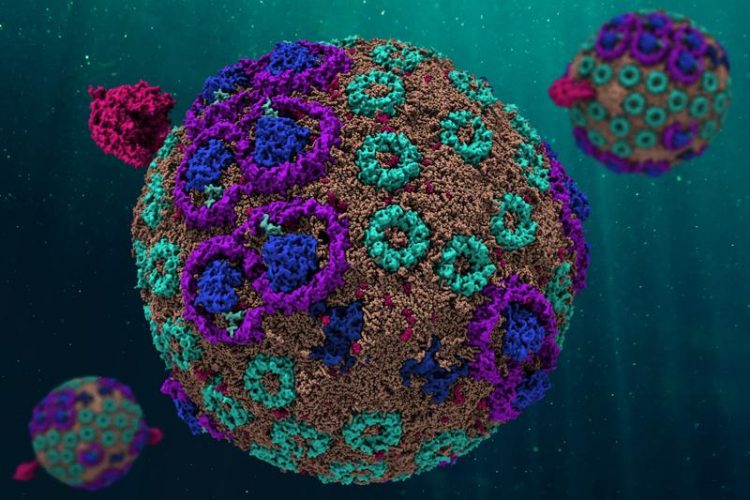The 136 Million Atom-Model: Scientists Simulate Photosynthesis

The model of the chromatophore is spherically round, scientists used computers with an enormous capacity to develop it. The simulation behaves in exactly the same way as its counterpart in nature. Source: Christopher Maffeo, University of Illinois
The project was initiated by the late German-American physics professor Klaus Schulten from the University of Illinois, who researched the understanding and representation of atomic interactions of living systems. His research group modelled the chromatophore, a light-absorbing part of a cell that releases chemical energy in the form of a molecule called ATP. These chromatophores are found in plant cells as well as in some bacteria.
“They act like a solar cell of the cell. With their antenna complexes, they absorb light and release energy in the form of ATP for all other cell activities,” says Ulrich Kleinekathöfer. The professor of theoretical physics at Jacobs University worked on the project together with his doctoral student Ilaria Mallus. Based on the data of their American colleagues, they performed quantum mechanical calculations for the model.
To find out how this system works, the international research group dissected the chromatophore with every tool available to science, from laboratory experiments over atomic force microscopy to software innovations. All parts were reassembled in the 136 million atom model, which behaves like its counterpart in nature. This was only possible with the help of enormously powerful supercomputers. “Standard simulations work with about 100,000 atoms, this model is 1,000 times larger, it is an advance into new dimensions,” says Kleinekathöfer.
So far, researchers have usually only been able to simulate individual proteins. The model shows the interplay of very many proteins along the entire process chain, from light absorption to the production of ATP. “At some point, we will be able to simulate an entire bacterium or cell,” believes Kleinekathöfer. “This is an important step towards this goal.”
About Jacobs University Bremen:
Studying in an international community. Obtaining a qualification to work on responsible tasks in a digitized and globalized society. Learning, researching and teaching across academic disciplines and countries. Strengthening people and markets with innovative solutions and advanced training programs. This is what Jacobs University Bremen stands for. Established as a private, English-medium campus university in Germany in 2001, it is continuously achieving top results in national and international university rankings. Its more than 1,500 students come from more than 120 countries with around 80% having relocated to Germany for their studies. Jacobs University’s research projects are funded by the German Research Foundation or the EU Research and Innovation program as well as by globally leading companies.
For more information: www.jacobs-university.de
Facebook | Youtube | Twitter | Instagram | Weibo
Prof. Dr. Ulrich Kleinekathöfer
Professor of Theoretical Physics
Email: u.kleinekathoefer@jacobs-university.de
Source:
Cell, Volume 179, P1098-1111, 2019,
Atoms to Phenotypes: Molecular Design Principles of Cellular Energy Metabolism
Media Contact
All latest news from the category: Life Sciences and Chemistry
Articles and reports from the Life Sciences and chemistry area deal with applied and basic research into modern biology, chemistry and human medicine.
Valuable information can be found on a range of life sciences fields including bacteriology, biochemistry, bionics, bioinformatics, biophysics, biotechnology, genetics, geobotany, human biology, marine biology, microbiology, molecular biology, cellular biology, zoology, bioinorganic chemistry, microchemistry and environmental chemistry.
Newest articles

First-of-its-kind study uses remote sensing to monitor plastic debris in rivers and lakes
Remote sensing creates a cost-effective solution to monitoring plastic pollution. A first-of-its-kind study from researchers at the University of Minnesota Twin Cities shows how remote sensing can help monitor and…

Laser-based artificial neuron mimics nerve cell functions at lightning speed
With a processing speed a billion times faster than nature, chip-based laser neuron could help advance AI tasks such as pattern recognition and sequence prediction. Researchers have developed a laser-based…

Optimising the processing of plastic waste
Just one look in the yellow bin reveals a colourful jumble of different types of plastic. However, the purer and more uniform plastic waste is, the easier it is to…



